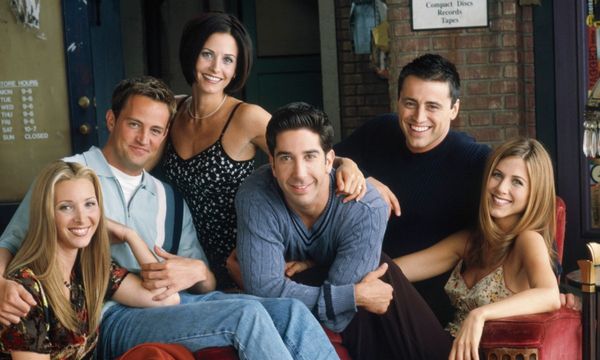Theatre and film have provided audiences with a menagerie of popular characters over the years. Many of whom are adapted and interpreted by new actors generation after generation. An actor's goal, especially when embodying a pre-established character, is to essentially take part in a relay race. To push the character as far as it can go with the talent provided and leave the baton to the next performer. However, sometimes characters are laid to rest with no new actors or films to push the race along. In a sense, one can say that the art of silent film acting was a character that was long laid to rest. Long forgotten by the masses after "talkie" technology made the very idea of silent filmmaking obsolete. Michel Hazanavicius' 2011 silent film, "The Artist," serves as a continuation of that relay race as well as a curtain call for the genre. It blends classic silent film acting and modern acting to create performances that seem dated but timeless all the same. By using elements of expressionism, particularly in the nightmare scene, Hazanavicius leads the audience to remember the film as a movie with no context. It's a dated story told in a timeless fashion, thereby making it one of the most unique and well-made movies in recent years. However, a large portion of that success can be attributed to the obvious commitment of the actors from start to finish. In fact, the performances in "The Artist" seem to create a chronological timeline of performance styles from silent to "talkie acting all without adhering to standard modern Hollywood standards.
Take, for example, the opening of the film. It's the opening of silent film star George Valentin's latest picture. What's interesting to note here is the use of acting within acting. Here Dujardin (Valentin) seems to be playing a one-note hero off on a mission. Valentin's performance is meant for entertainment and little else. One can also say that this is meant to represent silent films as they were before Chaplin. Simple short films made for the entertainment of the masses. As the camera pans, George comes into focus. From here, the viewer is treated to a short scene where Valentin runs around stage, shouting words of praise and adoration for his audience. Dujardin's movements almost seem Chaplin-esque, maybe intentionally so. When looking at the 1916 film "The Fireman," or most others in Chaplin's compendium, it's easy to see some similarities. The textbook, "Acting in the Cinema," describes Chaplin's movements as, "veering sharply between lyric pantomime, music hall mugging, and Stanislavskian revelation of psychological 'depth,'" (Naremore 114). However, Valentin's movements are not wholly Chaplin-esque. If anything, they're faux-Chaplin. This is a wise acting choice on Dujardin's part because it makes the dynamic between him and Miller all the more interesting before her first scene. In the film, Miller represents the future and Valentin the past. By adhering to a pre-Chaplin model, Valentin's character has already been shown as old fashioned. Shortly after, Miller manages to meet Valentin through a series of circumstances similar to a scene in Chaplin's, "The Lion's Cage (1928)." Chaplin and Bejo, who plays Miller, have the same movements as they try to maneuver their way out of a situation.
From here, the movie becomes much more expressionistic, particularly in the dream sequence mentioned earlier. Once the studio introduces Valentin to the concept of "talking pictures," he's left cynical and, most importantly, alone in his criticism. Without any sound whatsoever the viewer can practically hear Valentin's laughter, hear the studio executives try to explain that this is the way of the future. Here, the facial expressions essentially write the dialogue for this scene. The mise-en-scene of the darkly lit room also helps spell out the grim future that Valentin will likely face should he not take part in the talkies. Talkies turn out to be an existential nightmare for the actor as one of the next scenes shows him in a dressing room. He takes a sip from his glass, puts it down, and the audience is left to hear a faint sound. It immediately catches the viewer off-guard, taking the audience out of the silent ambiance. Surrounded by noise, Valentin runs to his mirror in desperation, frantically shouting at the top of his lungs to no avail. He eventually wakes up, the sounds were only a dream, an insight into his current existential crisis. What makes this scene powerful is the absolute terror in Dujardin's face as he reacts to these new and terrifying sounds. When looking at the French silent film "Panicky Picnic" (1909), one can see a parallel in how Valentin reacts to this scene. "Picnic" is certainly much more unsettling and disturbing than this scene but the horrified reactions and expressions carry over just the same. Fear is a natural human emotion, one very easy to replicate. Charles Aubert's, "The Art of the Pantomime," showcased in "Acting in The Cinema" details how an actor can portray fear. In "Panicky Picnic," the man's reaction to the demons chasing him is the same as can be seen in the pantomime model. Eyes and eyebrows raised, mouth agape. In "The Artist," the performance is slightly more nuanced and structured but leads to the same result. First Valentin tries to say, "what the hell," when he fails he is taken aback and tries again. When that fails he panics and turns the chair over, leading to his pantomime pose. Even though it lasts for a brief moment, the style is still there.
What's ironic about "The Artist" is that the film utilizes modern actors and manages to create performances that cannot be dated. If one were to show this film to a first-year film student he/she would likely come to the conclusion that this was made in the 1920s or early '30s. Even with recognizable faces like John Goodman, the movie manages to blur time simply through the performances. Not a single actor gives a performance that can be traced to the film's time of origin. When discussing what makes "The Artist" different from other modern movies, one can obviously point to the fact that this is a silent film. In modern Hollywood, most of the acting is accomplished through dialogue. Proper delivery and writing is almost key in movie storytelling now. Proper performances are evaluated on the quality of emotion in the actor's voice, specifically asking whether or not the delivery is strong enough for the viewer to be invested. "The Artist" exists in a world without words, without dialogue. As a result, the actors are left to mannerisms and expressions to convince the viewer.
Most importantly, however, the expressions in the film are not exaggerations. Valentin and Miller are played with a level of realism and mysticism that can only be captured in silent film. Visual storytelling lets the audience know in a matter of seconds that Peppy Miller and George Valentin are in love. There is no supplemental dialogue or scenes required for the audience to understand. If the viewer pays attention to the subtlety of both performances, one can see that the chemistry is there. One of the bigger reasons why these performances cannot be stacked against modern Hollywood acting is because "The Artist" subverts all kinds of acting. Bejo and Dujardin borrow from Chaplin, other silent films, and Hollywood training to deliver the first modern silent film performances. It's almost impossible to compare these performances without some kind of overlap or contradiction. Simply put, the performances in "The Artist" transcend the same kind of analysis one would give a Chaplin film or a modern film. Instead, it is important to recognize the inspiration behind each choice.
To conclude, "The Artist" not only serves as a temporary resurrection of the black and white silent film, it also serves as the perfect performance mix. By borrowing the exaggerations and clown-like nature of Chaplin, the Aubert model, and other silent films while adding a touch of modern acting talent, Dujardin and Bejo have created a rainbow of acting. As stated at the beginning, actors must propel their characters into a higher state of being than when they first happened upon it. In this case, both actors have modernized and revolutionized what it means to be a silent film star. The film is genius in its simplicity and what makes it work are the performances. It's a project that defies time itself, existing in a Schrodinger's box between classic and new. Hazanavicius has created the perfect summary of film in just under two hours. By starting in the pre-Chaplin era, the audience is able to see the mass appeal of simplistic action and comedy movies. As Peppy Miller enters, the viewer sees a paradigm shift and the old ways of film become obsolete. After debate and struggle, the two eventually blend together. Sound and silence, black, white, and color all come together in this last moment as the camera pans out. As if to say that film, and by extension, the performances that make them happen will continue to evolve. No matter what, however, those old methods will always remain true. Even if there are slight variations, the classic methods will continue on forever.


















